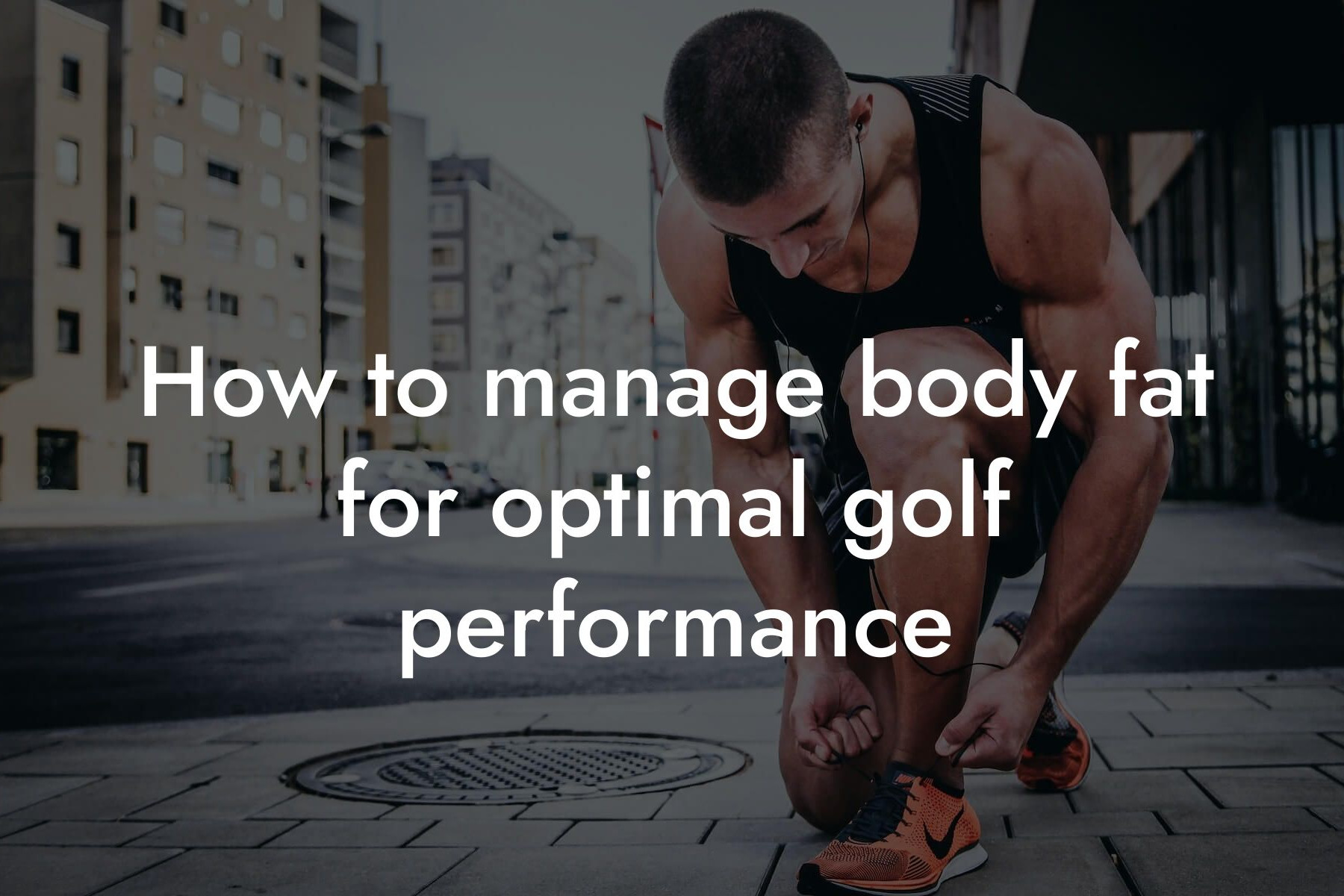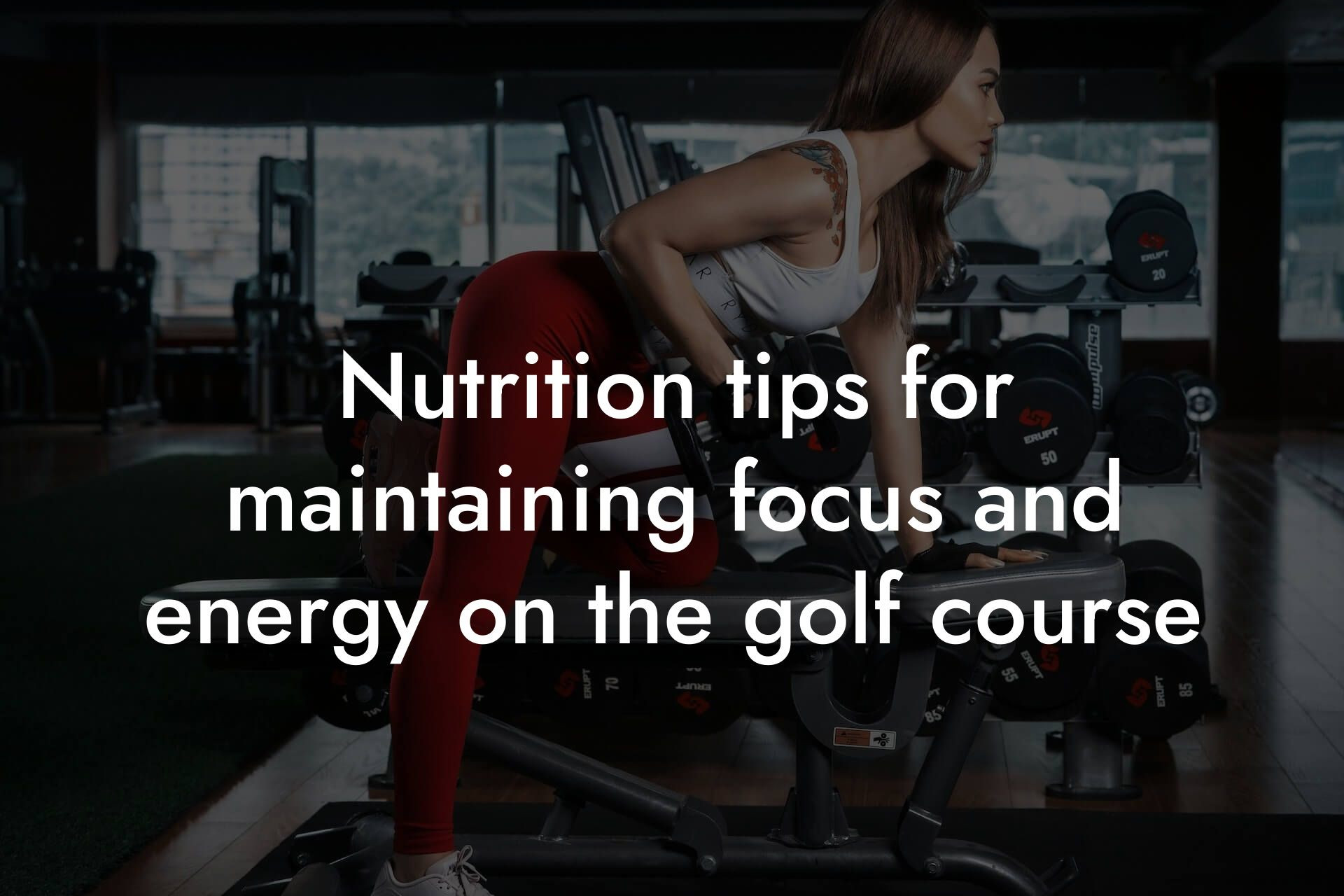As a golfer, you know that participating in a tournament can be physically and mentally demanding. The intense focus, precision, and physical exertion required to perform at your best can leave you feeling drained and fatigued. Proper recovery is crucial to restoring your body and mind, allowing you to bounce back stronger and more resilient for your next competition. In this article, we'll explore the essential recovery strategies for golfers after a tournament, helping you to optimize your performance and maintain a competitive edge.
Table of Contents
Immediate Post-Tournament Recovery (0-2 hours)
In the immediate aftermath of a tournament, it's essential to focus on reducing muscle soreness, replenishing energy stores, and rehydrating your body. Here are some key strategies to implement:
1. Stretching and Foam Rolling: Gentle stretching and foam rolling can help reduce muscle tension and promote blood flow to the affected areas. Focus on your major muscle groups, including your shoulders, back, hips, and legs.
2. Hydration: Drink plenty of water or a sports drink to replenish lost electrolytes and fluids. Aim to consume at least 16-20 ounces of fluid for every pound of body weight lost during the tournament.
3. Nutrition: Consume a balanced meal or snack that includes protein, complex carbohydrates, and healthy fats within 30-60 minutes of finishing your round. This will help to replenish energy stores and support muscle recovery.
Short-Term Recovery (2-48 hours)
In the short-term, your focus should shift to promoting deeper recovery and reducing inflammation. Here are some strategies to implement:
1. Active Recovery: Engage in low-intensity aerobic activities such as cycling, swimming, or using a stationary bike to promote blood flow and gentle movement.
2. Compression Garments: Wear compression clothing, such as tights or sleeves, to help improve blood flow and reduce muscle soreness.
3. Cryotherapy: Use ice baths, cold compresses, or cryotherapy chambers to reduce inflammation and muscle soreness.
4. Sleep and Relaxation: Prioritize getting 7-9 hours of sleep and engage in relaxation techniques such as meditation, deep breathing, or yoga to reduce mental and physical stress.
Long-Term Recovery (48-72 hours)
In the long-term, your focus should shift to rebuilding and strengthening your body. Here are some strategies to implement:
1. Strength Training: Engage in strength training exercises to rebuild and strengthen your muscles, focusing on exercises that target your core, glutes, and legs.
2. Flexibility and Mobility: Incorporate flexibility and mobility exercises to improve your range of motion and reduce muscle tension.
3. Body Assessment: Use a DEXA machine to assess your body composition, bone density, and muscle mass. This will provide valuable insights into your overall health and fitness, allowing you to make data-driven decisions about your training and nutrition.
Nutrition and Supplementation
A well-planned nutrition and supplementation strategy is critical to supporting your recovery. Here are some key considerations:
1. Protein: Consume 1.2-1.6 grams of protein per kilogram of body weight daily to support muscle repair and rebuilding.
2. Carbohydrates: Focus on complex carbohydrates such as whole grains, fruits, and vegetables to replenish energy stores and support muscle recovery.
3. Omega-3 Fatty Acids: Supplement with omega-3 fatty acids to reduce inflammation and promote muscle recovery.
4. Antioxidants: Consume antioxidant-rich foods such as berries, leafy greens, and nuts to reduce oxidative stress and promote recovery.
Mental Recovery
Mental recovery is just as important as physical recovery. Here are some strategies to implement:
1. Reflection and Review: Reflect on your performance, identifying areas for improvement and developing strategies to address them.
2. Goal Setting: Set realistic and achievable goals for your next competition, focusing on process-oriented goals rather than outcome-oriented goals.
3. Visualization: Engage in visualization techniques to mentally rehearse your next competition, building confidence and mental toughness.
4. Mindfulness: Practice mindfulness techniques such as meditation and deep breathing to reduce stress and anxiety.
Common Mistakes to Avoid
Here are some common mistakes to avoid during the recovery process:
1. Ignoring Nutrition: Failing to prioritize nutrition can hinder recovery and impact performance.
2. Insufficient Sleep: Not getting enough sleep can impede recovery and increase the risk of injury.
3. Overtraining: Engaging in intense training too soon after a tournament can lead to burnout and injury.
4. Neglecting Mental Recovery: Failing to prioritize mental recovery can lead to mental fatigue and decreased performance.
Recovery is a critical component of any training program, and golfers are no exception. By implementing these recovery strategies, you can optimize your performance, reduce the risk of injury, and maintain a competitive edge. Remember to prioritize nutrition, hydration, sleep, and mental recovery, and don't neglect the importance of body assessment and supplementation. With a well-planned recovery strategy, you'll be ready to take on your next tournament with confidence and precision.
Frequently Asked Questions
What is the importance of recovery strategies for golfers after a tournament?
Recovery strategies are crucial for golfers after a tournament as they help to reduce muscle soreness, improve flexibility, and replenish energy stores. This enables golfers to return to their normal training routine quickly, maintain performance levels, and reduce the risk of injury.
How soon should I start my recovery process after a tournament?
It's essential to start your recovery process immediately after the tournament. The sooner you begin, the better your body can recover. Aim to start your recovery process within 30-60 minutes of finishing your last round.
What are some common signs of fatigue in golfers?
Common signs of fatigue in golfers include decreased energy levels, muscle soreness, stiffness, and decreased performance. If you're experiencing any of these symptoms, it's essential to prioritize recovery to avoid burnout and injury.
What role does nutrition play in the recovery process for golfers?
Nutrition plays a critical role in the recovery process for golfers. Consuming a balanced diet that includes protein, complex carbohydrates, and healthy fats helps to replenish energy stores, repair muscle tissue, and support immune function.
What are some examples of recovery foods for golfers?
Examples of recovery foods for golfers include bananas, dates, nuts, dried fruits, energy bars, and protein shakes. These foods are rich in carbohydrates, protein, and electrolytes, making them ideal for replenishing energy stores and supporting recovery.
How much water should I drink during the recovery process?
Aim to drink at least 8-10 glasses of water per day during the recovery process. Proper hydration helps to flush out toxins, replenish fluids, and support muscle function.
What is the importance of stretching and foam rolling in the recovery process?
Stretching and foam rolling are essential components of the recovery process as they help to improve flexibility, reduce muscle soreness, and promote blood flow. This can help to reduce the risk of injury and improve overall performance.
How often should I stretch and foam roll during the recovery process?
Aim to stretch and foam roll at least 2-3 times per day during the recovery process. Focus on key areas such as the shoulders, back, hips, and legs.
What is the role of compression garments in the recovery process?
Compression garments can help to improve blood flow, reduce muscle soreness, and promote recovery. They work by applying gentle pressure to the muscles, which helps to reduce inflammation and promote healing.
How long should I wear compression garments during the recovery process?
Aim to wear compression garments for at least 2-3 hours per day during the recovery process. You can wear them during the day, while sleeping, or during travel.
What is the importance of sleep in the recovery process for golfers?
Sleep is critical for recovery in golfers as it allows the body to repair and adapt to the physical demands of the game. Aim for 7-9 hours of sleep per night to support recovery.
What are some tips for improving sleep quality during the recovery process?
Tips for improving sleep quality during the recovery process include establishing a consistent sleep schedule, creating a relaxing sleep environment, avoiding caffeine and electronics before bedtime, and practicing relaxation techniques such as meditation or deep breathing.
How can I reduce muscle soreness during the recovery process?
Ways to reduce muscle soreness during the recovery process include stretching, foam rolling, using compression garments, taking warm baths, and using topical creams or ointments such as arnica or tiger balm.
What is the role of massage in the recovery process for golfers?
Massage can help to reduce muscle soreness, improve flexibility, and promote recovery in golfers. It works by increasing blood flow, reducing inflammation, and promoting relaxation.
How often should I get a massage during the recovery process?
Aim to get a massage at least once per week during the recovery process. You can also self-massage using tools such as lacrosse balls or tennis balls.
What are some common mistakes golfers make during the recovery process?
Common mistakes golfers make during the recovery process include not prioritizing recovery, not consuming enough protein, not staying hydrated, and not getting enough sleep.
How can I balance recovery with training and practice?
Balance recovery with training and practice by prioritizing recovery, listening to your body, and adjusting your training schedule as needed. Make sure to include rest days and active recovery sessions such as yoga or light cardio.
What is active recovery and how can it benefit golfers?
Active recovery refers to low-intensity exercises such as yoga, cycling, or swimming that help to promote recovery without putting excessive strain on the body. It can help to improve flexibility, reduce muscle soreness, and promote blood flow.
How can I incorporate active recovery into my training schedule?
Incorporate active recovery into your training schedule by including low-intensity exercises 1-2 times per week. You can also use active recovery as a warm-up or cool-down during training sessions.
What is the role of mental recovery in the recovery process for golfers?
Mental recovery is critical for golfers as it helps to reduce stress, improve focus, and promote relaxation. Techniques such as meditation, visualization, and deep breathing can help to support mental recovery.
How can I prioritize mental recovery during the recovery process?
Prioritize mental recovery during the recovery process by setting aside time for relaxation techniques, practicing gratitude, and focusing on positive self-talk.
What are some common myths about recovery for golfers?
Common myths about recovery for golfers include the idea that recovery is only for elite athletes, that it's only necessary after competition, and that it's a one-size-fits-all approach. In reality, recovery is essential for all golfers, regardless of level or competition schedule, and should be tailored to individual needs.
How can I customize my recovery strategy to meet my individual needs?
Customize your recovery strategy by listening to your body, identifying areas of weakness, and experimenting with different recovery techniques. Work with a coach, trainer, or healthcare professional to develop a personalized recovery plan.
What are some common mistakes golfers make when it comes to recovery nutrition?
Common mistakes golfers make when it comes to recovery nutrition include not consuming enough protein, not staying hydrated, and relying on processed foods and supplements. Focus on whole, nutrient-dense foods and consult with a sports dietitian for personalized nutrition advice.
How can I stay motivated to prioritize recovery?
Stay motivated to prioritize recovery by setting goals, tracking progress, and celebrating small victories. Remember that recovery is an essential component of overall performance and that it's worth the investment.
Here are some related articles you might love...
- How to manage body fat for optimal golf performance
- Strength training to improve golf performance
- Nutrition tips for maintaining focus and energy on the golf course
- The impact of body composition on golf swing power and accuracy
- The role of core strength in golf accuracy
- Bone density and injury prevention in golf
- Off-season fitness programs for golfers
- How DEXA scans can benefit professional golfers
- Maintaining flexibility and muscle mass for a better golf swing
Zak Faulkner
Zak Faulkner is a leading authority in the realm of physical health and body composition analysis, with over 15 years of experience helping professionals optimise their fitness and well-being. As one the experts behind Tano Performance Group, Zak has dedicated his career to providing in-depth, science-backed insights that empower clients to elevate their physical performance and overall health.
With extensive knowledge of DEXA technology, Zak specializes in delivering comprehensive body assessments that offer precise data on body fat, muscle mass, bone density, and overall physique. His expertise enables individuals to make informed decisions and achieve their fitness goals with accuracy and confidence. Zak’s approach is rooted in a deep understanding of human physiology, combined with a passion for helping clients unlock their full potential through personalised strategies.
Over the years, Zak has earned a reputation for his commitment to excellence, precision, and client-focused service. His guidance is trusted by top professionals who demand the best when it comes to their health. Whether advising on fitness programs, nutritional strategies, or long-term wellness plans, Zak Faulkner’s insights are a valuable resource for anyone serious about taking their health and fitness to the next level.
At Tano Performance Group, Zak continues to lead our Content Team revolutionising how professionals approach their physical health, offering unparalleled expertise that drives real results.




